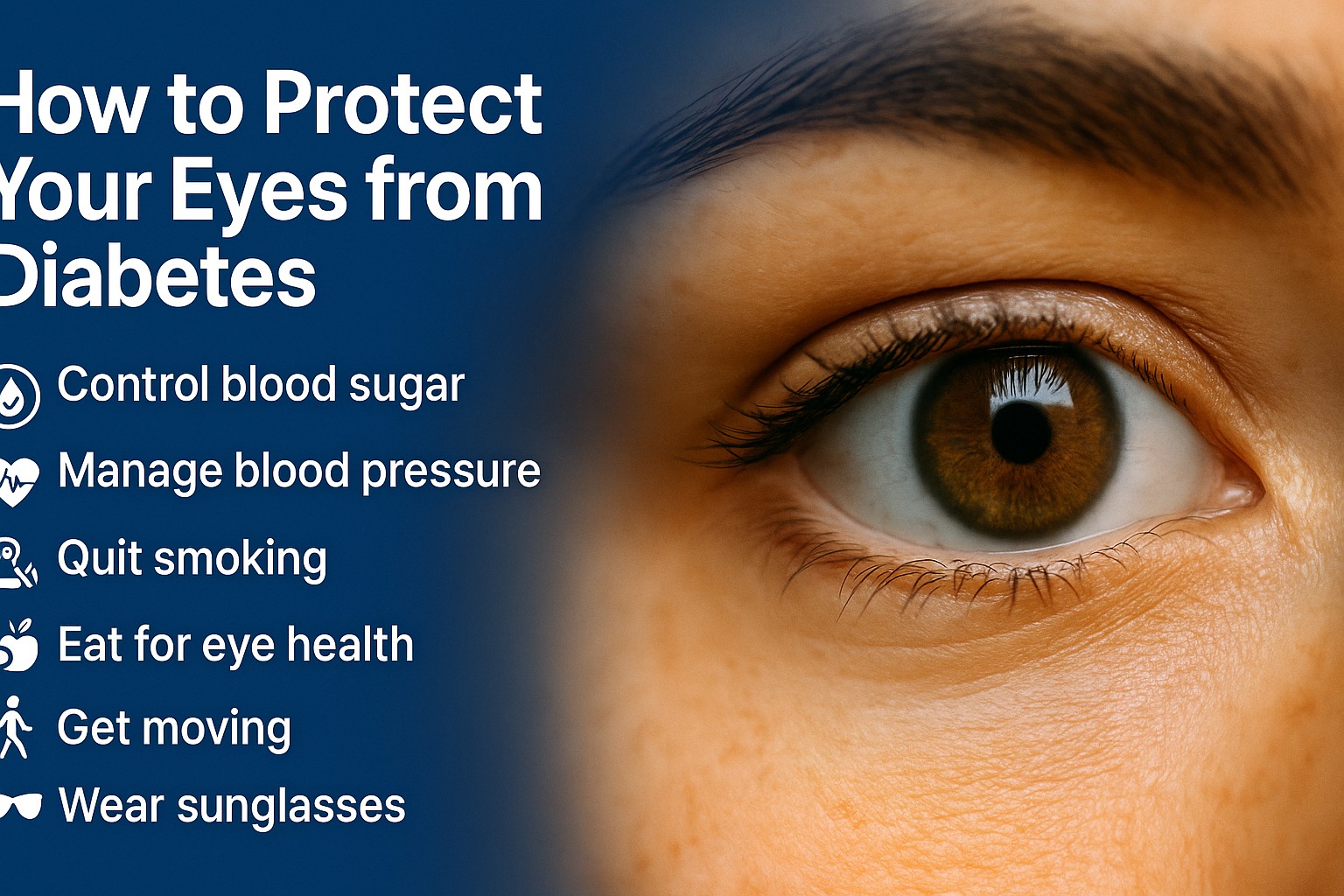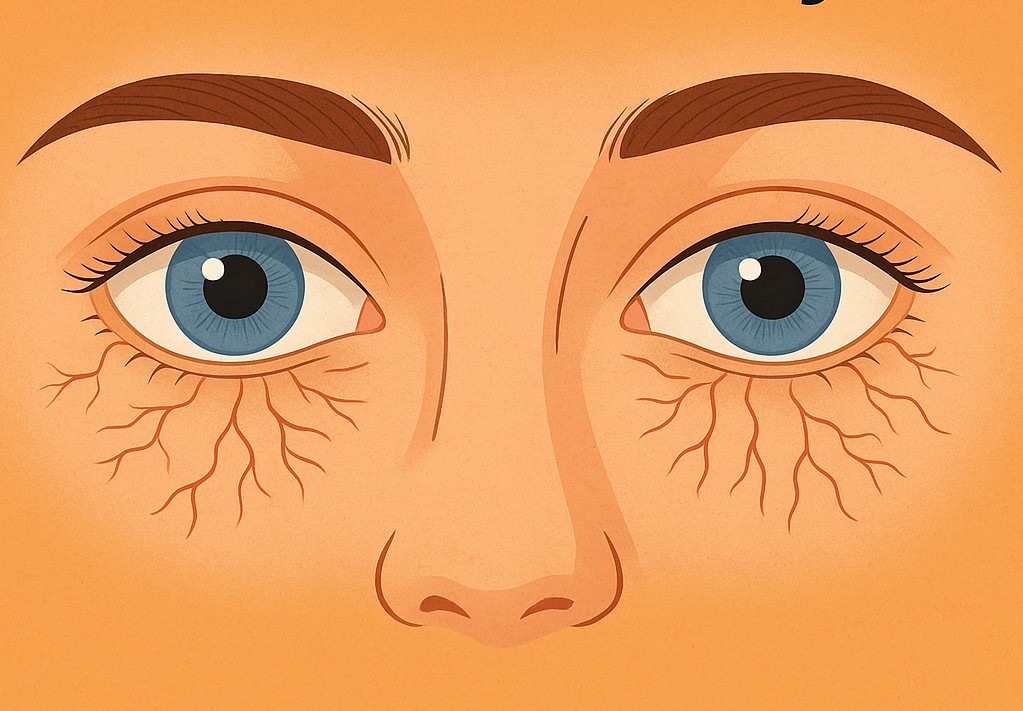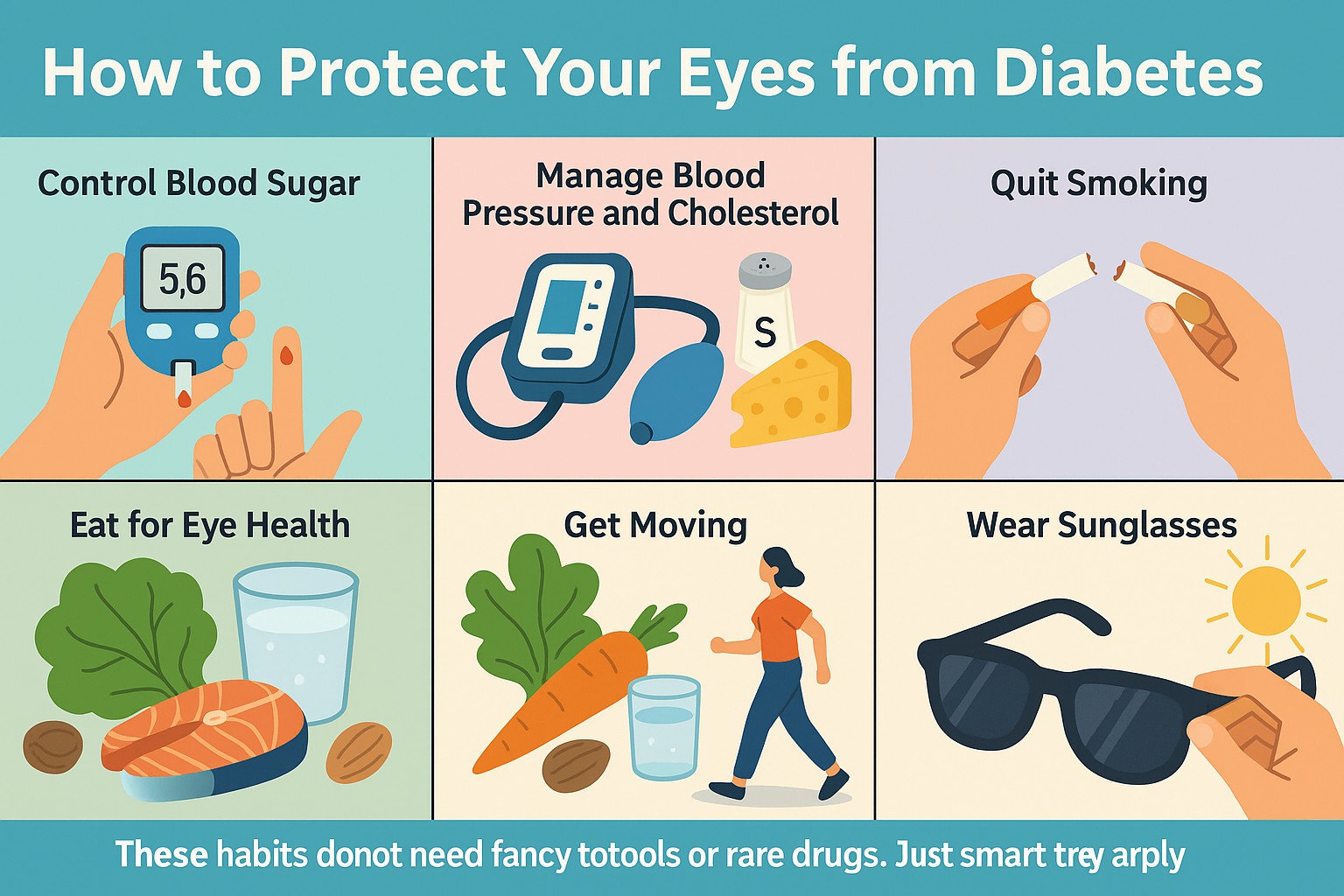Diabetes does more than raise blood sugar. It can slowly damage your eyes. Most people do not know it is a top cause of vision loss in adults. This damage does not always take years. In some cases, eyesight fades in just a few months.
The first signs often feel minor. You may notice blurry vision or dry eyes. These may not seem serious at first. But they can grow into major problems. Without care, they can lead to blindness.
Your eyes need steady blood flow and oxygen. High sugar levels can block that flow. Diabetes harms the small blood vessels inside your eyes. As the damage spreads, your vision can get worse. If you miss the signs, you may lose your sight for good.
You can stop most of this. You do not need a medical background. You just need the right steps. This guide explains how diabetes affects your eyes. It also shows how to protect your vision. You will learn the risks, the signs, and what actions to take today.
If you have diabetes, this article is for you. If someone close to you has it, you can help them more. Good vision means safety, freedom, and peace of mind. Let’s explore how to protect it.
What Happens Inside the Eye?
Your eyes do more than help you see. They use light, nerves, blood flow, and clear fluid to send images to your brain. Each part must work well. Diabetes puts stress on this system. High sugar levels harm the small vessels in the retina. That is the thin layer at the back of your eye.
These vessels can swell or close up. When blood stops flowing, your eye tries to fix the problem. It creates new vessels. But these new ones are weak. They can leak and leave scars. This leads to diabetic retinopathy. If the damage spreads, your risk of losing vision grows.
Sugar also pulls water into the lens. That changes how your eye focuses. You may notice blur, even with new glasses. Your vision may shift from clear to cloudy in just a few days. These changes confuse many people.
Nerves in the eye feel the damage too. Diabetes can block the signals between your brain and your eye. This makes it harder to see sharp detail. It also weakens your ability to adjust to bright or dim light.
Common Eye Conditions from Diabetes
Diabetes can trigger several types of eye problems. Each one affects your sight in a different way. Here are the main ones to know:
Diabetic Retinopathy
This is the most common diabetes-related eye issue. It starts when high sugar harms the small vessels in the retina. In the early stage, you may not feel or see anything wrong. But the damage grows slowly. Blood can leak into the eye. Scar tissue can pull at the retina. This may lead to blindness if not treated early.
Diabetic Macular Edema
This condition happens when fluid collects in the macula. The macula helps you see sharp detail. When it swells, your central vision becomes blurry. Reading, driving, and face recognition become hard. This problem often comes with diabetic retinopathy.
Cataracts
People with diabetes often get cataracts earlier than others. A cataract clouds the lens of your eye. It makes everything look hazy. You may feel like you’re looking through fog. Bright light may bother your eyes more than before.
Glaucoma
Glaucoma raises pressure inside your eye. This pressure harms the nerve that sends images to your brain. You lose vision slowly. It often starts from the side and moves in. If not caught early, glaucoma can lead to permanent loss.
Early Warning Signs to Watch For
Eye damage from diabetes often starts without pain. Your vision may feel fine one day and change the next. You may not notice the problem until it grows worse. That is why early signs matter. Quick action can protect your sight.
Watch for these signs:
- Blurry or shaky vision
- Dark spots or floating shapes
- Trouble seeing in low light
- Loss of side vision
- Sharp pain or pressure in the eye
- Faces or words that look unclear
If you notice any of these, act fast. Do not wait. Get a full eye exam. A simple checkup may stop the damage before it gets worse. Your eyes need care before problems grow.
Why Eye Exams Are So Important
You cannot always feel eye damage from diabetes. Regular eye exams are your best defense. A full eye check looks deep inside the eye. It helps catch damage before it becomes serious. A doctor can see leaking blood, swelling, or nerve issues even if you feel fine.
Experts suggest at least one full eye exam each year. If you already have eye problems, you may need more visits. Make the exam a habit. Do not skip it, even if you think your eyes are fine.
During the exam, your doctor may use drops to widen your pupils. This lets them check the back of your eye. It may feel odd, but it does not hurt. After the test, your eyes may feel sensitive to light for a few hours.
How to Protect Your Eyes from Diabetes
You can take strong steps to protect your vision. These habits do not need fancy tools or rare drugs. Just smart daily choices can make a big difference.
Control Blood Sugar
Keep your blood sugar close to your target range. This lowers your risk of damage to eye vessels. Use a meter to check levels. Follow your food plan. Take your medicine on time.
Manage Blood Pressure and Cholesterol
High blood pressure adds more risk. So does high cholesterol. Keep both in a safe range. Eat less salt and fat. Take your heart medicine if needed.
Quit Smoking
Smoke speeds up eye damage. It narrows blood vessels and weakens healing. If you smoke, this is a smart time to stop. Ask your doctor for help.
Eat for Eye Health
Your eyes stay healthy when you feed them well. Leafy greens like spinach and kale provide key nutrients. Fish gives good fats that keep the retina strong. Carrots help with night vision.
Nuts guard your eyes with natural oils. Vitamins A, C, and E support clear sight. Water keeps your eyes clean, moist, and fresh.
Get Moving
Exercise boosts blood flow. It helps control sugar, weight, and pressure. You do not need a gym. A short walk each day helps.
Wear Sunglasses
Strong sunlight can hurt your eyes. Put on sunglasses that block UV light. They protect your lens and retina from harm.
What to Expect If You Need Treatment
Sometimes, good habits are not enough. If damage grows, your doctor may suggest treatment. Modern care can stop or slow down the harm.
Some common treatments include:
- Laser therapy to seal leaking vessels
- Injections in the eye to reduce swelling or block new weak vessels
- Surgery if there is bleeding or scar tissue
These treatments sound scary, but many people say they feel little pain. Most are fast and done in the doctor’s office. Results are often strong if done early.
When to See a Doctor Right Away
Some vision changes need urgent care. Do not wait if you see bright flashes of light. That may signal damage inside your eye. If you lose vision in one or both eyes, take it as a warning. Sudden loss should never be ignored.
Eye pain that does not go away can mean pressure or injury. It may point to nerve damage or bleeding. You may also notice new floaters. These look like dark spots that move across your sight. One or two may seem normal. A sudden burst is not.
These signs often come without any clear cause. Each one may point to a serious problem. Some can lead to blindness if left untreated. A quick visit to the doctor can stop the damage. Do not take chances with your eyes.
If anything feels sharp, strange, or sudden, get help. Your eyes give early warnings. Listen to them. Fast care can protect your vision.
Final Thoughts
Diabetes can put your vision at risk, but you still have control. Your daily habits shape your eye health. You do not need high-cost tools. You need simple, steady care and quick action when your eyes send a warning.
Start with your blood sugar. Keep it in a healthy range. That one step protects your eyes more than most people know. Eat foods that help both your body and your vision. Use fresh greens, clean water, and natural fats. Stay active. Even light exercise helps your blood flow and supports your eyes.
Visit your eye doctor once a year. That visit can catch silent damage before it spreads. Do not ignore sudden changes. Blurry vision, sharp pain, or new floaters mean you need help fast.
Your eyes guide your life. They help you see faces, places, and the path ahead. Take care of them each day. A few smart steps now can keep your sight clear in the years to come.
You can also explore non-medical tools that support your daily wellness. Learn more in our guide on Elevate Your Health Routine: Non-Medical Wellness Aids You Can Trust.
Frequently Asked Questions
What eye problems come from diabetes?
Diabetes can harm your eyes in many ways. It may cause diabetic retinopathy, macular swelling, cataracts, or glaucoma. Each problem can lower your vision or lead to blindness.
When do eye issues start after diabetes?
Eye damage can start early. Some people notice changes within months. Others may not see signs for years. Eye checks each year help find problems before they grow.
Does blurry vision mean high sugar?
Blurry vision may happen when your sugar level jumps. It can also happen if sugar drops too low. If the blur returns often, it may mean damage has begun.
Are floaters linked to diabetes?
Some floaters are harmless. But a sudden burst of floaters may mean bleeding or a torn retina. These signs may point to diabetic eye disease.
How often should I check my eyes?
Most people with diabetes need one full eye exam each year. If damage has started, your doctor may ask you to come more often.
Can food help protect my vision?
Some foods help keep your eyes strong. Greens, carrots, fish, and nuts give your body key nutrients. These can lower the risk of vision loss over time.
What should I do if I lose sight or see flashes?
Do not wait. Flashes or sudden vision loss mean you need help fast. Go to your eye doctor right away. Quick care can save your sight.
Disclaimer: This guide shares general health information. It does not give medical advice or treatment. Talk to a licensed doctor before you change your health plan or handle any condition like diabetes on your own.






